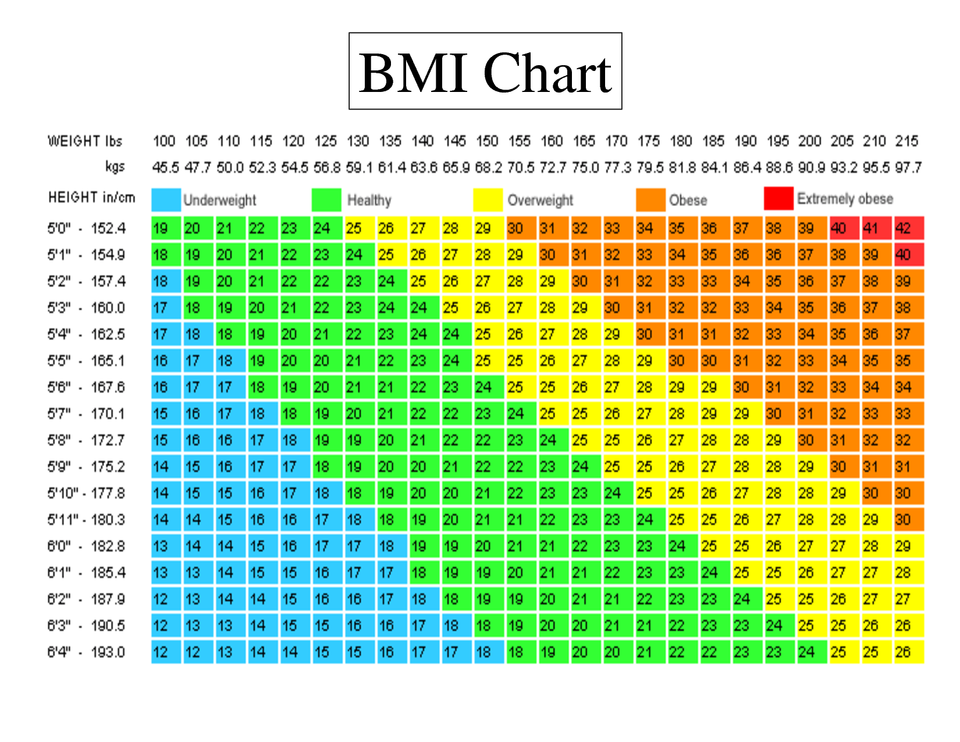Supplied by BMI Calculator USA
The body mass index is a calculation of fat, in relation to a person’s height and weight. While the formula is not a precise measurement of the amount of fat in the body, it is a simpler and cheaper method than some diagnostic assessments. However, many people don’t understand what is involved in calculating body mass index (BMI).
Determining BMI can provide a fairly accurate idea of whether people are too heavy, or whether they do not weigh enough. A high BMI indicates that someone might be at risk of certain medical conditions and diseases, such as heart disease, stroke, Type 2 diabetes and some types of cancer.
Carrying too many pounds puts stress on the heart, which may cause high blood pressure or gallstones. Other possible consequences of being overweight include back pain, osteoarthritis, excessive triglyceride and blood-cholesterol levels, and low amounts of the healthy kind of cholesterol (HDL).
How to Calculate BMI
An easy-to-use method of determining body mass index is a calculator. Use our BMI calculator to see how you rate. Some calculators provide varying methods for men, women, children and seniors. Others rate certain ethnicities differently, based on body builds; or take diet into consideration. The BMI is not the same for people who consume low-fat or low-carbohydrate foods as it is for those with less healthy eating habits.
What Is a Normal or Healthy BMI? – Calculating Body Mass Index (BMI)
The goal is to maintain a BMI of 18.5 to 24.9. An index over 30 means a person is obese, but those who discover they meet this definition should not be too discouraged. Dropping just a few pounds, by altering diet and exercising more, can have a dramatic effect on BMI. Charts are available to determine BMI. Look at height levels in the left-hand column and weight amounts across the top, then see where the vertical and horizontal columns meet to learn your BMI.
BMI for Men
The general technique for figuring out the BMI for men and women, of all ages, is identical. However, obesity rates are not the same for everyone. Men in the United States have an average BMI of 28.6, according to the Centers for Disease Control and Prevention.
“By the time you reach 35, you don’t need to gain any more weight,” said Dr. George L. Blackburn of Harvard Medical School. He explained that as men age, their muscles give way to fatty tissue, which results in weight gain. Adding more than 20 pounds after early adulthood is a clue that diet and exercise issues need to be addressed.
Men tend to pack on the pounds around their waistlines. Fat moves from there to the liver, which can cause metabolic ailments like diabetes. Barbara Rolls of the Nutritional Sciences Department at Pennsylvania State University told WebMD that the amount of food men eat at a sitting is 70 percent more than that which women consume.
BMI for Women – Calculating Body Mass Index (BMI)
For women, high BMI is often due to excessive weight in their hips, breasts, arms and legs. Obesity can trigger polycystic ovary syndrome (PCOS), and increase the risk of diabetes and cardiovascular disease. It may cause postmenopausal breast cancer, endometrial cancer or cervical cancer.
Being overweight also affects pregnancy. There is a greater danger of neonatal mortality and deformities in the fetuses of obese women. A high-BMI mother is less likely to breastfeed her baby, and is more susceptible to depression.
BMI Formulae Metric and Standard
Determining BMI entails using one of two mathematical computations. The metric BMI formula involves dividing one’s weight (in kilograms) by one’s height (in meters, squared). For instance, a person who weighs 70kg and is 1.75m tall should divide 70 by 1.75 to come up with the sum of 40; then divide 40 by 1.75. The result in this case is a BMI of 22.9.
The second technique, the imperial BMI formula, is a matter of multiplying weight (in pounds) by 703, then dividing that total by height (in inches, squared).
Another formula concerns waist circumference. More than 40 inches for a man, or 35 inches for a woman, is a warning sign for heart disease and diabetes. To determine the circumference, it is necessary to be standing while stretching a tape measure around the body, a bit higher than the hips, and exhaling just before reading the tape.
BMI Ranges – Calculating Body Mass Index (BMI)
Someone with a BMI of less than 18.5 needs to gain weight, in a healthy manner. Those with indexes between 18.5 and 24.9 are thought to have “normal” weight, while a BMI of 25 to 29.9 is considered overweight. Any measurement in excess of 30 is a sign of obesity.

BMI for Children
Several years ago, a study found that 20.6 percent of children between 12 and 19 years of age were obese. Among kids 6 to 11 years old, 17.4 percent were obese; while 9.4 percent of those between 2 and 5 met that dubious standard. Using a BMI chart or calculator is not recommended for kids younger than 2 years of age.
Conclusion
In addition to adopting a healthy diet, engaging in regular physical exercise is essential to maintaining proper weight levels. Committing time every day to walking can make a big difference. Jogging or running has even more benefits, though such strenuous activity can lead to problems in the knees and feet. Research has shown that pedometer users lower their blood pressure and BMI.
Those who avoid getting too fat or too thin are likely to have more energy, and experience less pain in their muscles and joints. They also tend to sleep better. BMI has its critics, partly because it usually does not take into account differing body types. For instance, athletes and others who tone their muscles might have a high BMI even though they are physically fit; and people like the elderly whose muscles have faded could have a low BMI despite being out of shape.
It is important to keep in mind that BMI is a screening aid, not a way to diagnose any particular condition. A more thorough assessment of whether a person is overweight or underweight involves analyzing diet, physical activity, genetics and skinfold thickness.
This article originally appeared on Wizefind.com.



